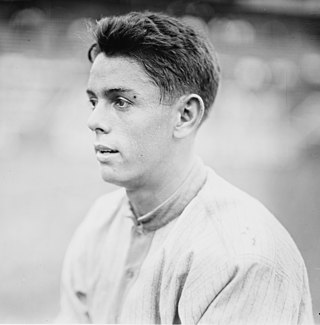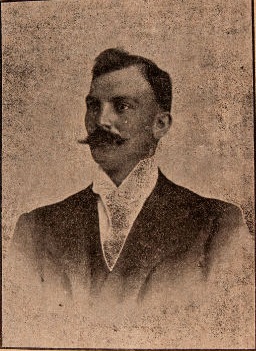Related Research Articles
The Cuban League was one of the earliest and longest lasting professional baseball leagues outside the United States, operating in Cuba from 1878 to 1961. The schedule usually operated during the winter months, so the league was sometimes known as the "Cuban Winter League." It was always a small league, generally 3 to 5 teams, and was centered in Havana, though it sometimes included teams from outlying cities such as Matanzas or Santa Clara. The league became racially integrated in 1900, and during the first half of the 20th century the Cuban League was a premier venue for black and white players to meet. Many great black Northern American players competed in Cuba alongside native black and white Cuban stars such as José Méndez, Cristóbal Torriente, Adolfo Luque, and Martín Dihigo. After 1947, the Cuban League entered into an agreement with Major League Baseball and was used for player development. Following the 1959 Cuban Revolution, however, tensions rose with the new Communist government, and in March 1961 the government decreed the abolition of professional baseball.

Alfredo A. Cabrera was a professional baseball shortstop who played many years in the Cuban League. His nickname was Pájaro, which is Spanish for "Bird."

The Habana B.B.C. also known as the Habana Reds or, later, the Leones del Habana was one of the oldest and most distinguished baseball teams in the old Cuban League, which existed from 1878 to 1961. Habana, representing the city of Havana, was the only team to play in the league every season of its existence and was one of its most successful franchises. In their early history they were known by their colors as the Reds; later they adopted the names of Leones or Lions. Throughout their existence they had a famous rivalry with Almendares.

Baldomero Pedro "Merito" Acosta Fernández was an outfielder in Major League Baseball who played five seasons for the Philadelphia Athletics and Washington Senators.

Bernardo Baró was a Cuban professional baseball player in the Negro leagues and the Cuban League. Primarily an outfielder, he also played some games as a pitcher or an infielder. He played for the Cuban Stars (West) and the Cuban Stars (East) in the Negro leagues and Almendares, San Francisco Park and Habana in the Cuban League from 1915 to 1929.
The Cuban Baseball Hall of Fame is a hall of fame that honors eminent baseball players from Cuban baseball. Established in 1939 to honor players, managers, and umpires in the pre-revolution Cuban League, by 1961 it had honored 68 players, managers, and umpires whose names are shown on a marble plaque at Havana's Estadio Latinoamericano. After the revolution, however, the Hall of Fame languished for more than 50 years, seldom mentioned or acknowledged and with no new inductees. Following a campaign led by Cuban filmmaker Ian Padrón, a meeting was held on November 7–8, 2014 to reformulate the Hall of Fame and to propose a museum in which it would be housed. The reformulated Hall recognized the original 68 members, and a jury of 25 people selected 10 new inductees—five from the pre-revolution period and five representing for the first time the post-revolution Cuban National Series. The planned site for the new museum is in the José Antonio Echeverría Workers' Social Club.

José Rodríguez, nicknamed "Joseíto" or "El Hombre Goma" in Spanish and "Joe" in English, was a Cuban infielder who played in Major League Baseball from 1916 to 1918 and in the Cuban League from 1914 to 1939. In the majors, he played for the New York Giants and was primarily a second baseman, while in the Cuban League and the U.S. minor leagues he mostly played first base. A defensive specialist, according to Roberto González Echevarría, Rodríguez "was considered the best defensive first baseman in Cuba" of his time. He was also a long-time manager in the Cuban League and managed for one season in the minors. He was inducted into the Cuban Baseball Hall of Fame in 1951.
The American Series was a set of baseball games played between Cuban and American teams in Cuba. An American team would travel to Cuba and play various professional, all-star and/or amateur Cuban teams throughout the country. The series usually took place either in the fall, after the end of the American season, or during spring training before the season began. The first American Series took place in 1879, with then minor league Worcester team going 2–0 against its Cuban opponents.
Club Fé was a Cuban baseball team based in Havana in the Cuban League. It played in 1882, 1885, from 1887 to 1890, and again from 1901 to 1914.

Antonio María García Callaghan, nicknamed "El Inglés", was a Cuban baseball catcher in the Cuban League. He played from 1882 to 1905 with several Cuban ballclubs, including Almendares, the Fe club, Habana, and the All Cubans. He was elected to the Cuban Baseball Hall of Fame in 1939.

Moisés Quintero Cavada was a Cuban baseball catcher in the Cuban League and Negro leagues. He played from 1887 to 1904 with Habana, Progreso, Almendares, the All Cubans, and Club Fé. He was elected to the Cuban Baseball Hall of Fame in 1953.
The Long Branch Cubans were a professional baseball team that played from 1913 to 1916. It was the first U.S. minor league baseball team composed almost entirely of Cubans. Several players, including Dolf Luque and Mike González, went on to play in the major leagues. The Cubans played in Long Branch, New Jersey from 1913 to 1915, except for the first half of the 1914 season, when they played in Newark, New Jersey. In 1916, they started the season playing in Jersey City, New Jersey as the "Jersey City Cubans." Later that summer, they moved their home games to Poughkeepsie, New York, where they were usually referred to as the "Long Branch Cubans." In late July 1916 they briefly moved to Harlem and finally to Madison, New Jersey in August.
Carmelita were a Cuban baseball team. They played in the Cuban League in 1887, the Cuban Summer Championship 1904 and 1908 and the Cuban-American Negro Clubs Series in 1904.
Prudencio Benavides (1870–??) was a Cuban baseball center fielder and manager in the Cuban League. He played with San Francisco from 1899 to 1901, with Club Fé in 1902 and 1905, and Alerta in 1905. He also managed Alerta in 1905 and Club Fé in 1908.

Alfredo Arcaño was a Cuban baseball left fielder in the Cuban League. He played from 1888 to 1909 with several ballclubs, mostly with the Habana club. He was elected to the Cuban Baseball Hall of Fame in 1940.
Angel Morán Benavides was a Cuban baseball second baseman in the Cuban League. He played with several teams from 1902 to 1908, including Club Fé, San Francisco, and Carmelita. He also played for Nuevo Criollo during the 1904 Cuban-American Major League Clubs Series.

Ramón "Chicho" Govantes Delgado was a Cuban baseball outfielder in the Cuban League and Negro leagues. He played from 1900 to 1910 with several clubs, including San Francisco, Almendares club, Habana, Cuban Stars (West), and Club Fé.
The Orientals were a Cuban baseball team in the Cuban League based in Havana. They played during the winter of 1916-1917 and Armando Marsans served as manager.
Progreso was a Cuban baseball team in the Cuban League. They first played in the league's second season of 1879, and then again played in the league from 1888 to 1890.
Alfredo Arango was a Cuban baseball player in the Cuban League who played with Almendares from 1885 to 1887 and Habana in 1890-1891.
References
- Figueredo, Jorge S. (2003), Cuban Baseball: A Statistical History, 1878–1961, Jefferson, North Carolina: McFarland & Company, ISBN 078641250X